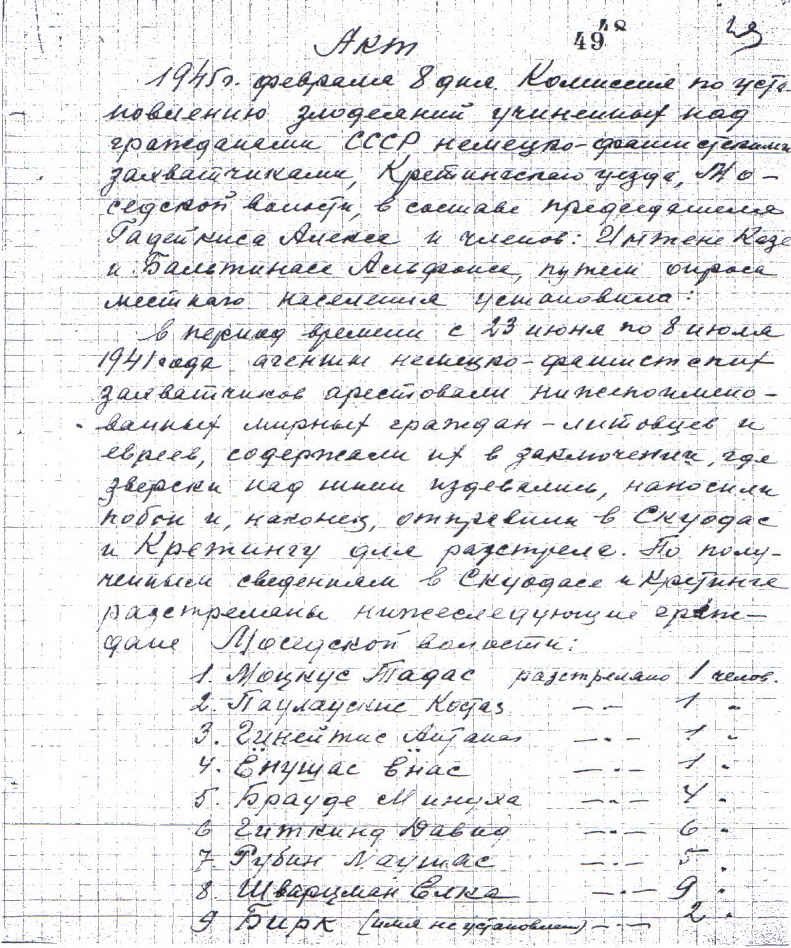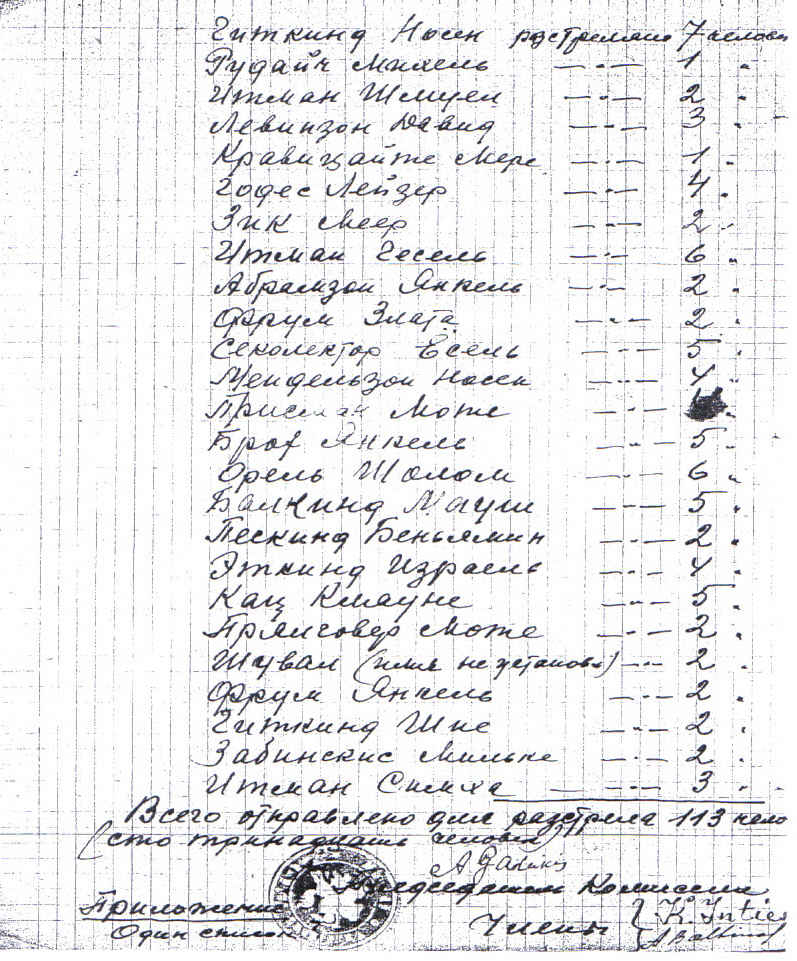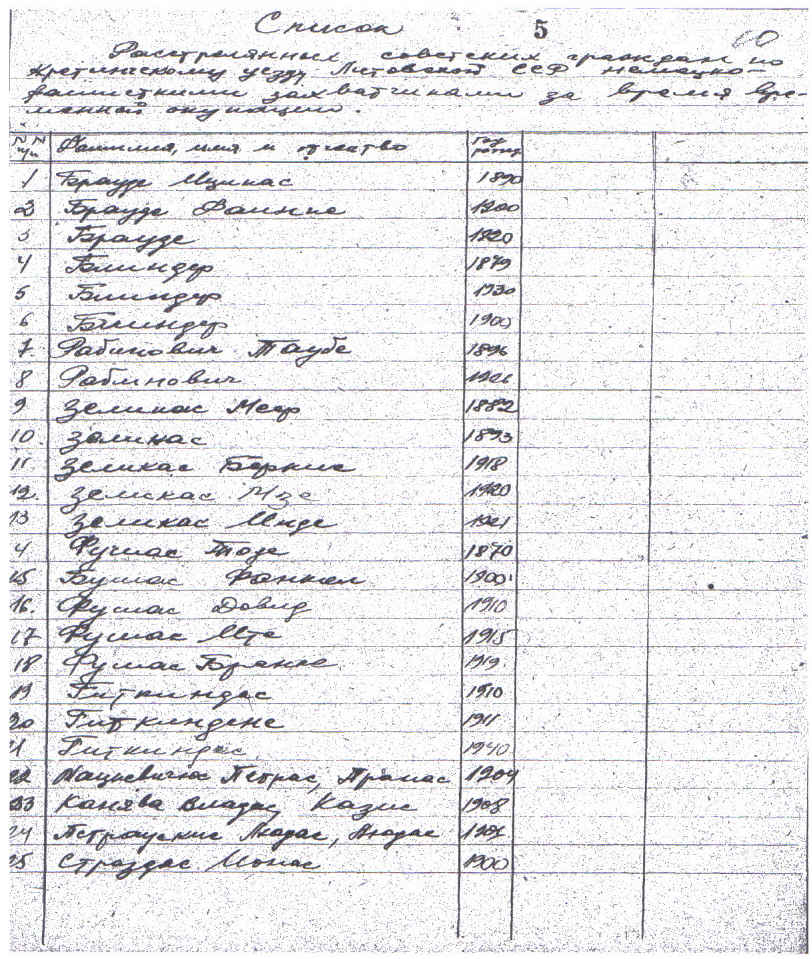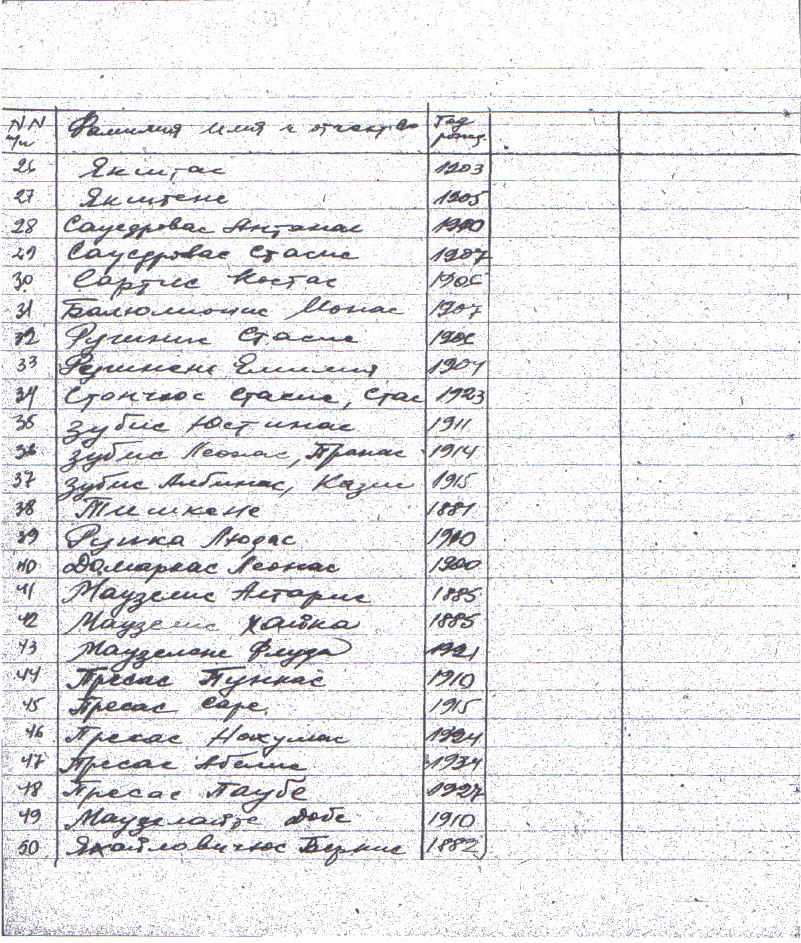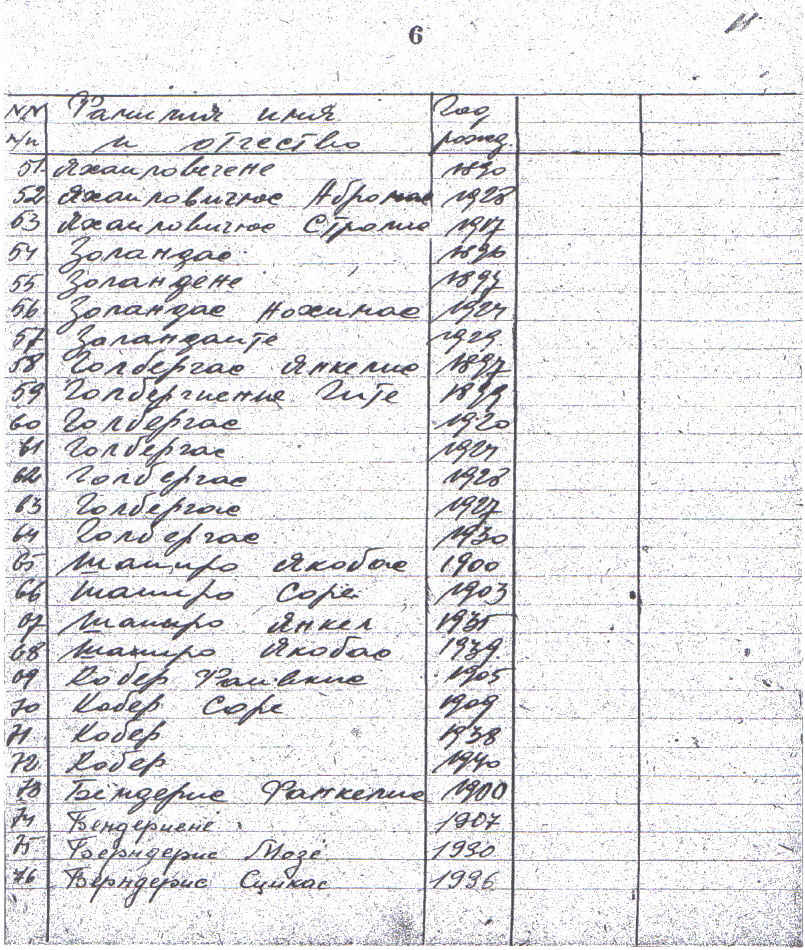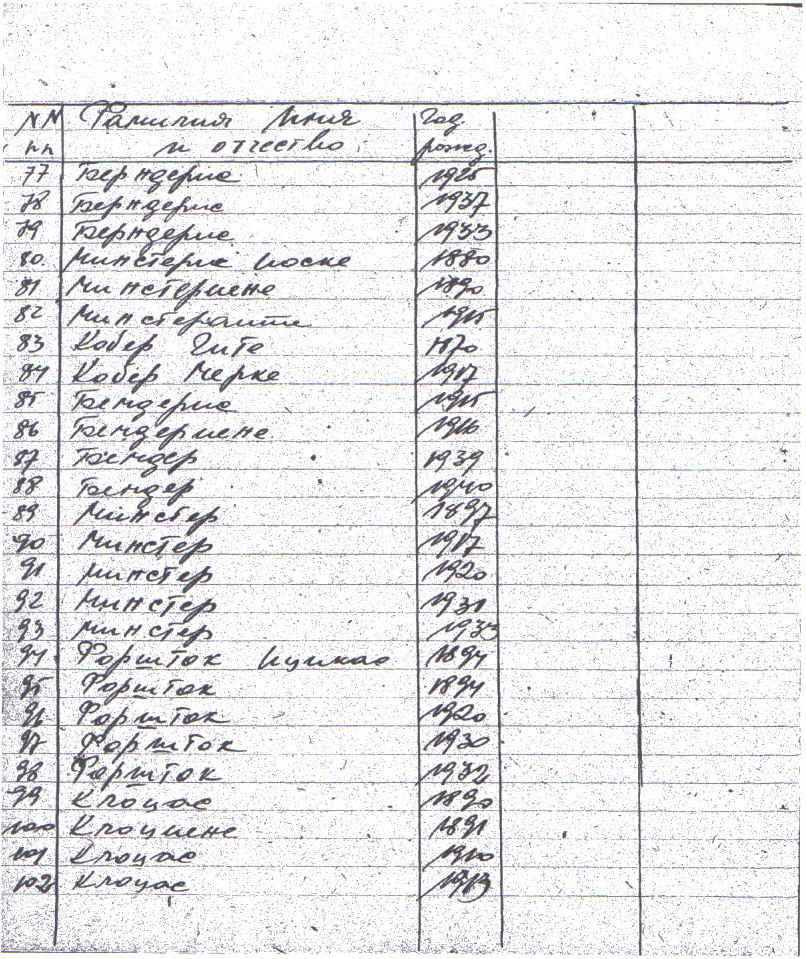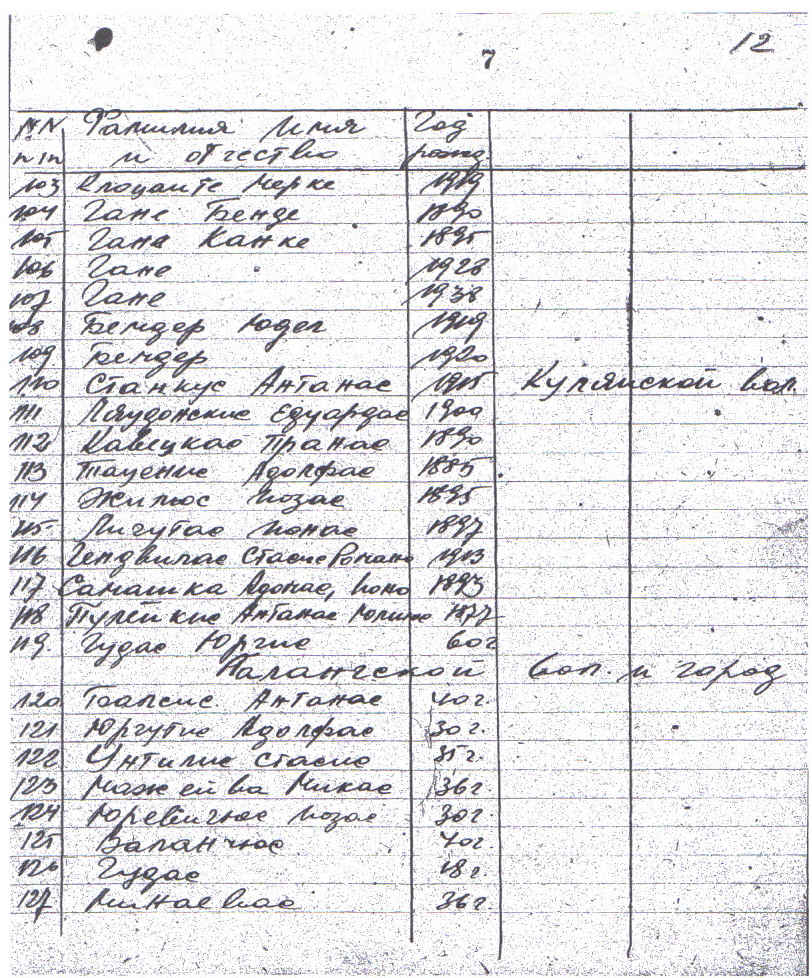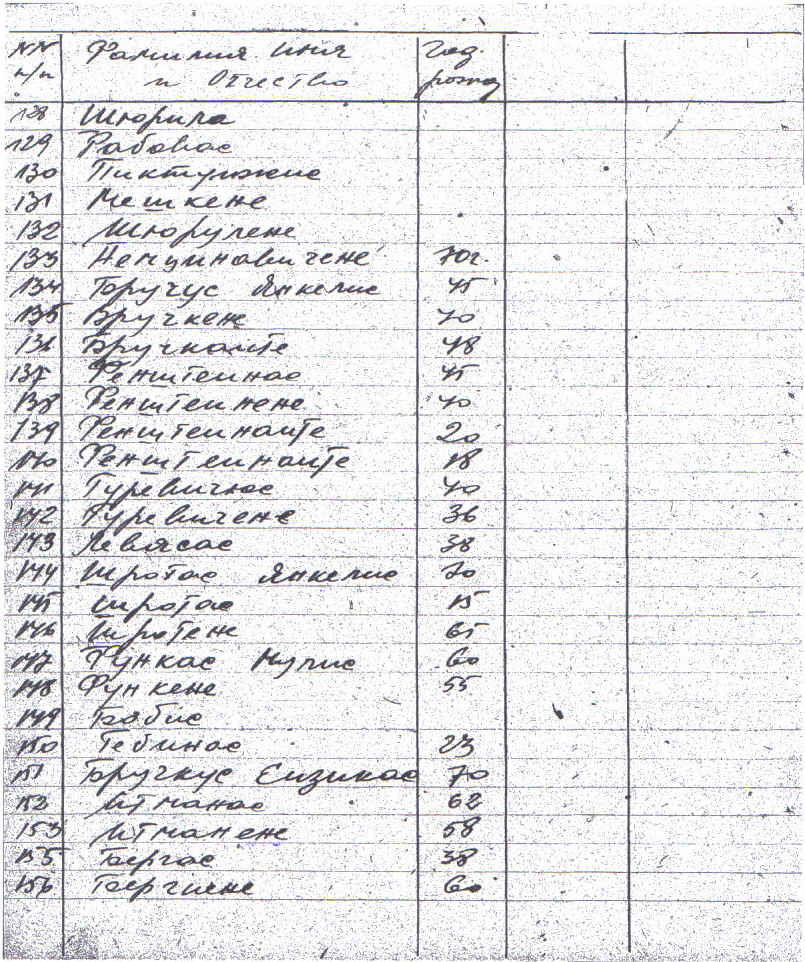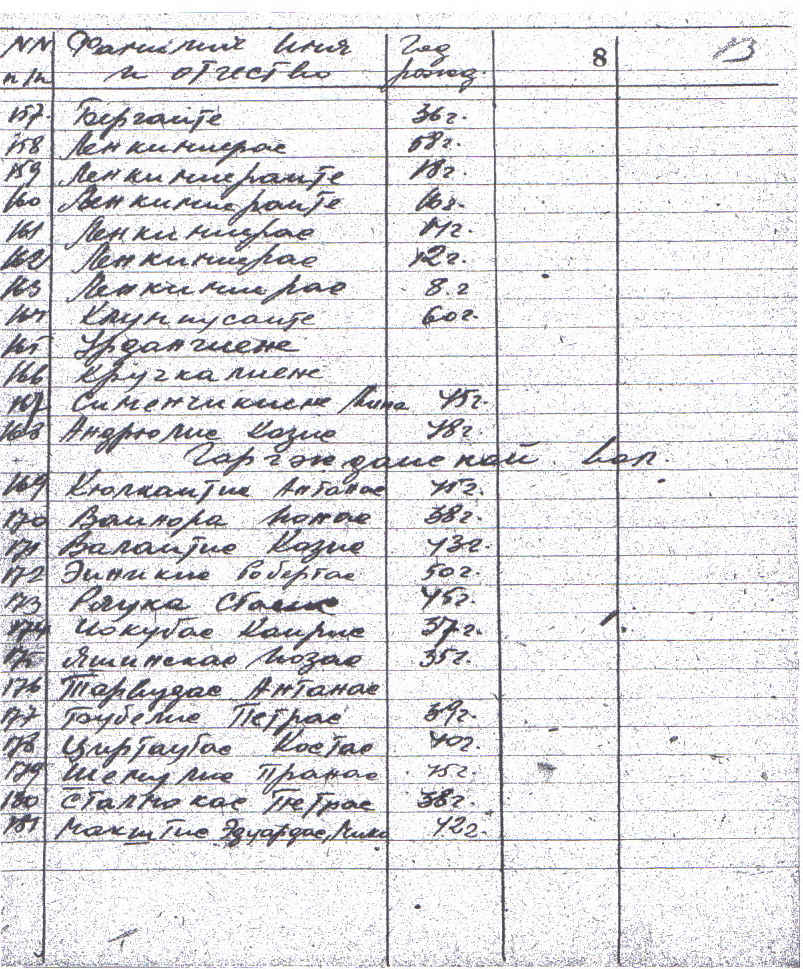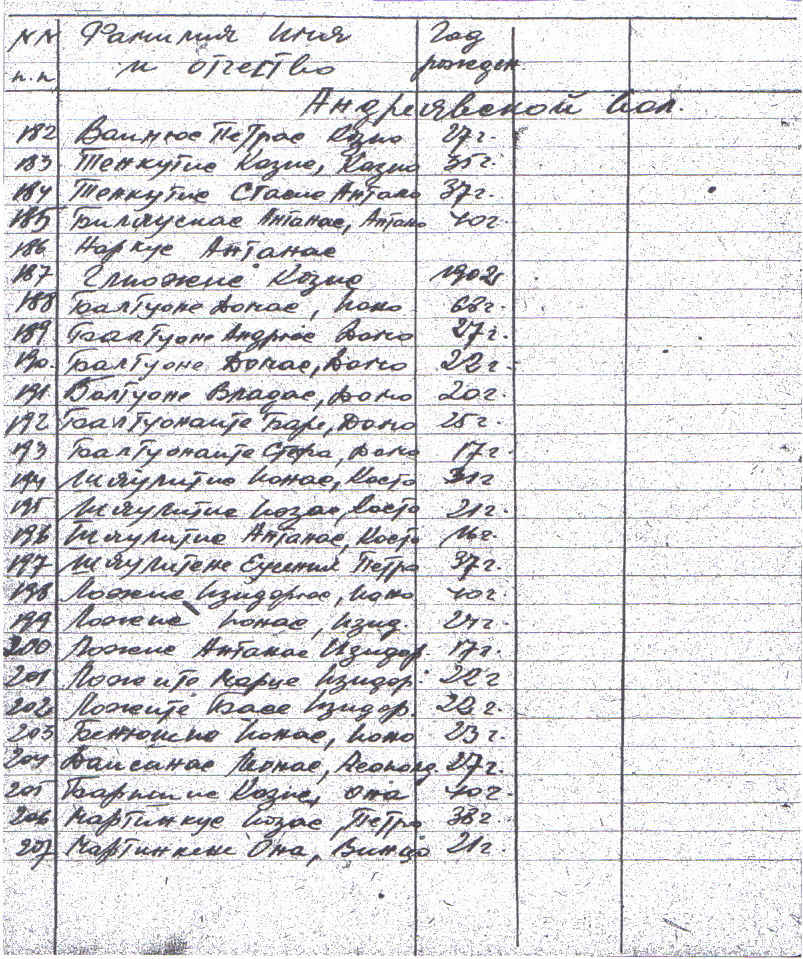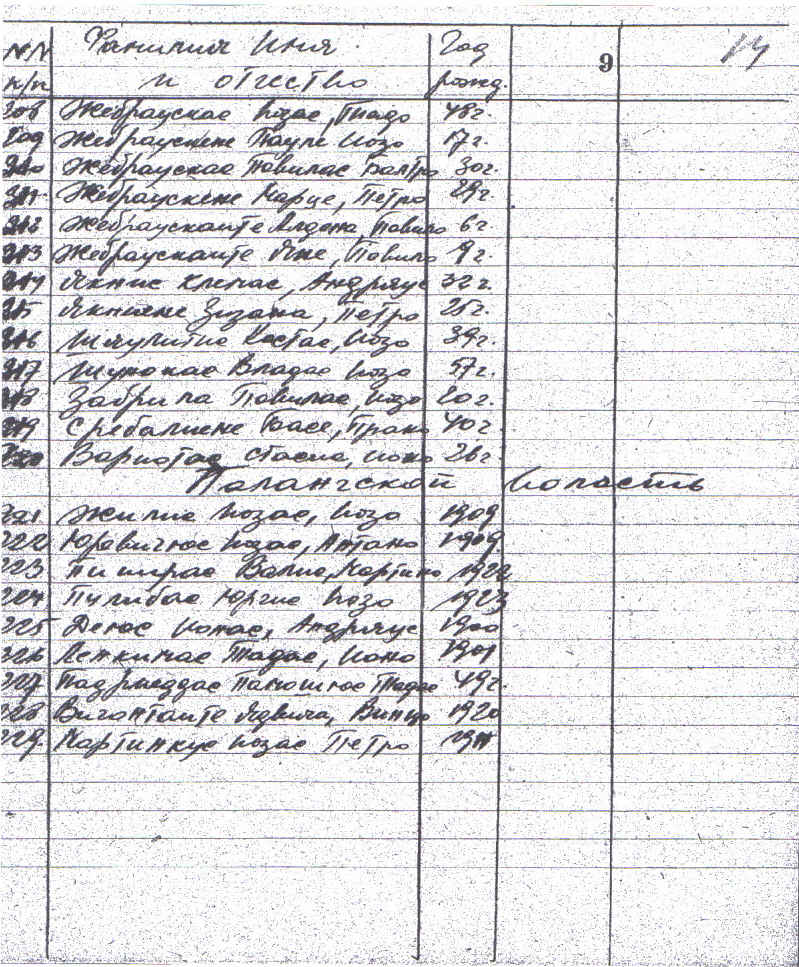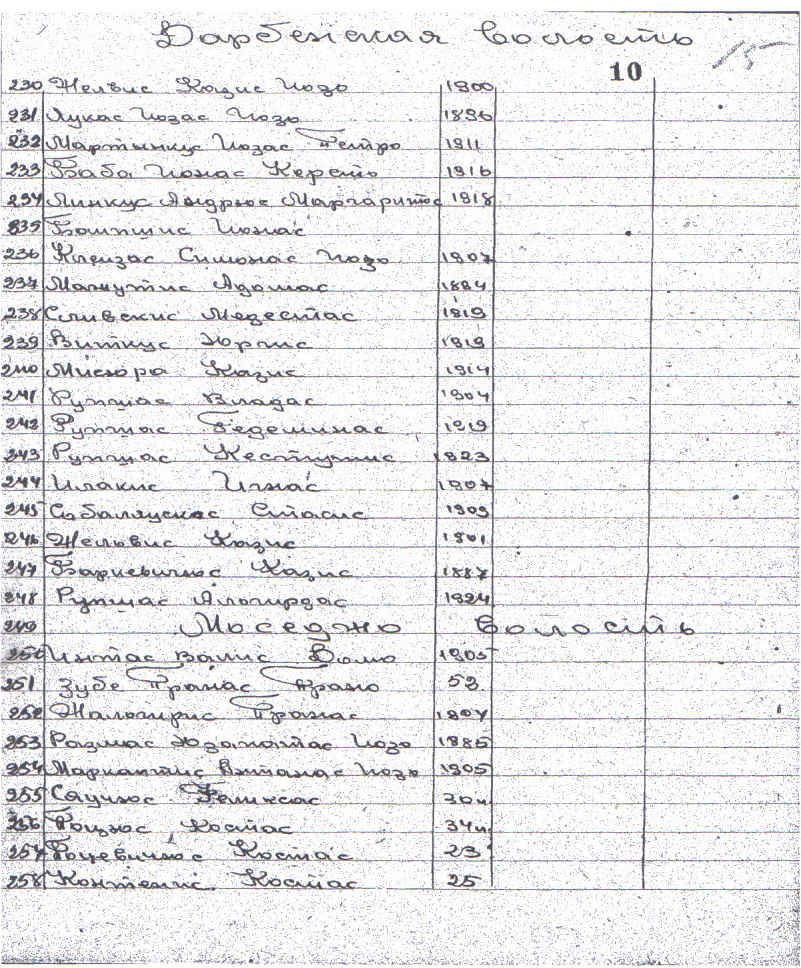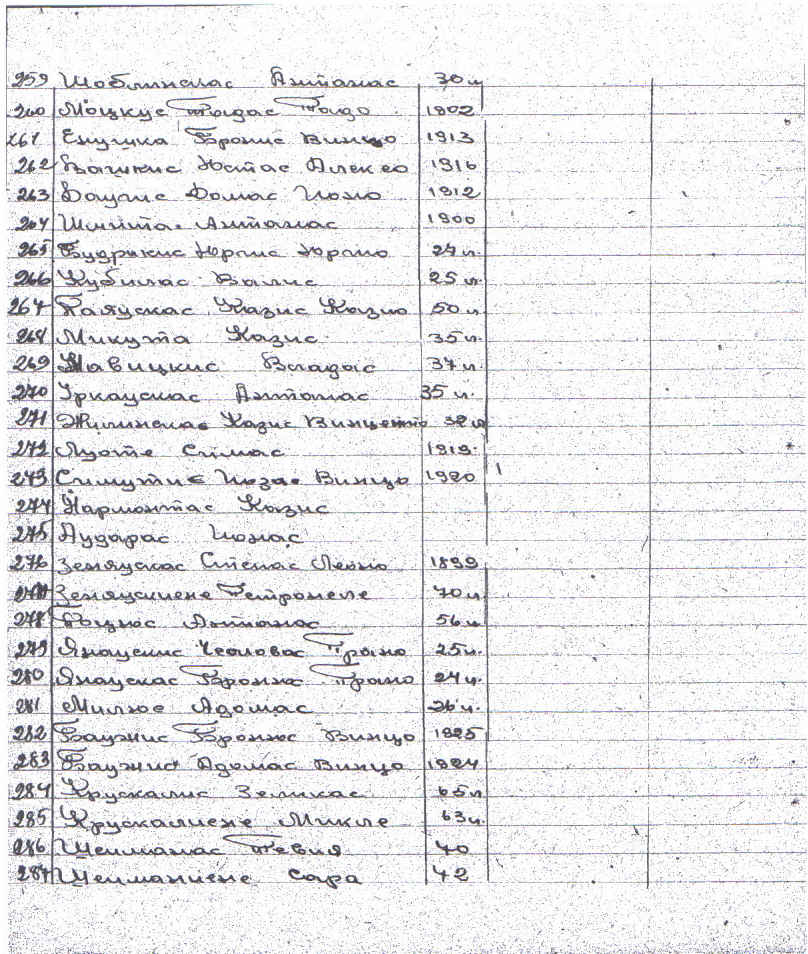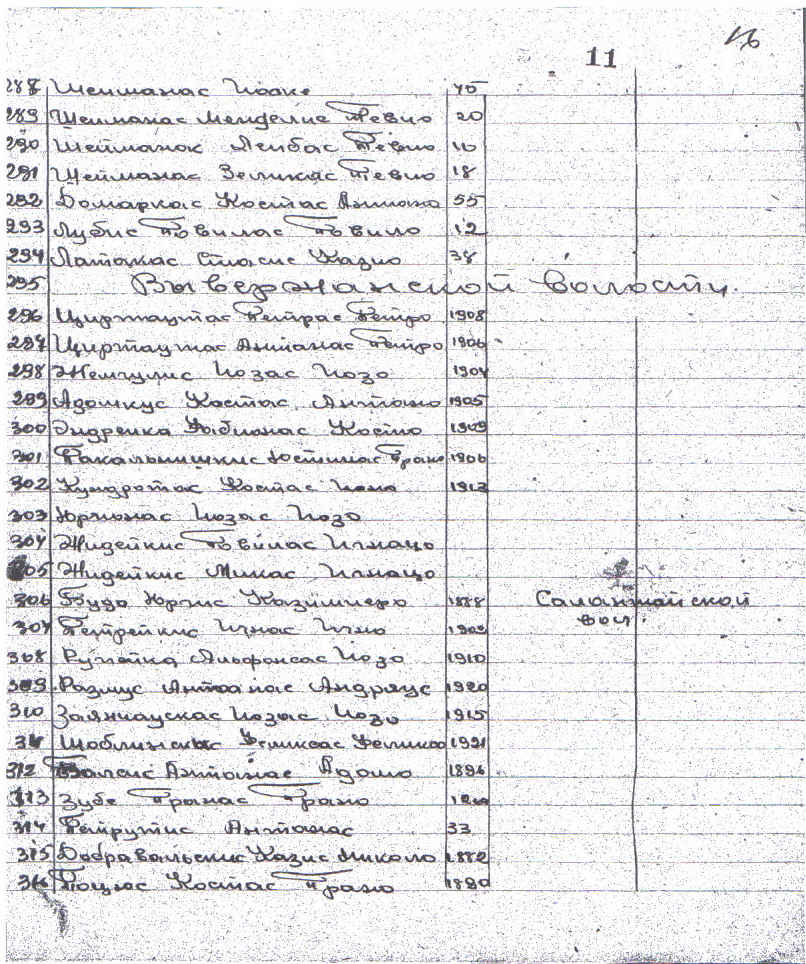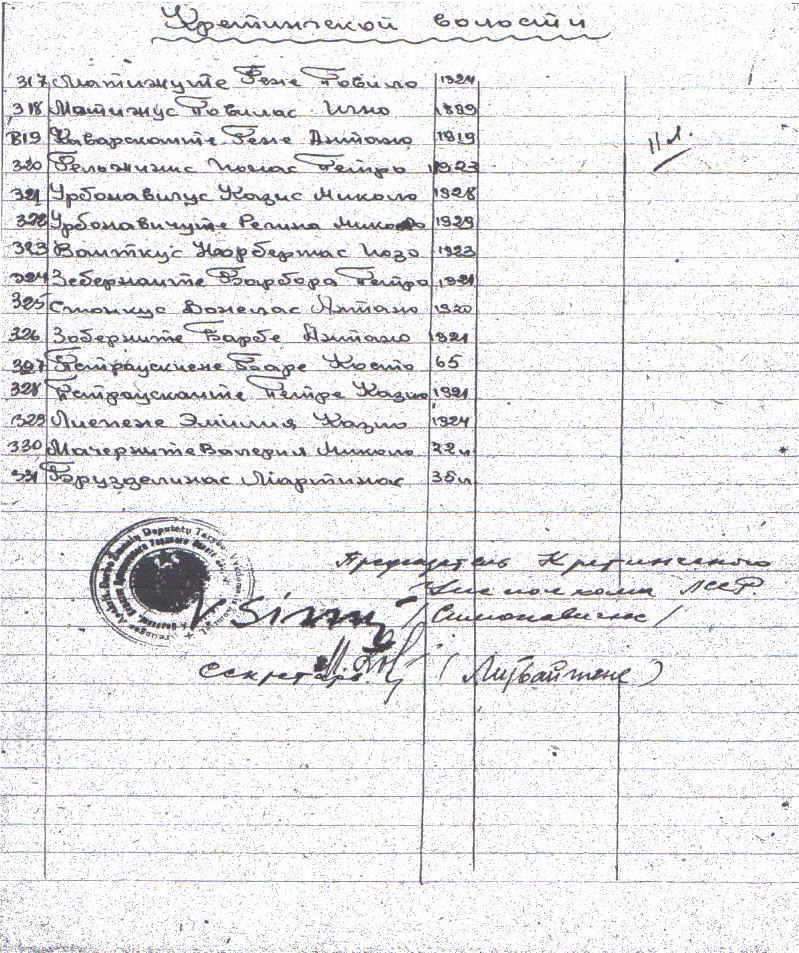
ESC - War Crimes
55°53'N, 21°15'E
Extraordinary State Commission to Investigate and Establish War Crimes of the German-Fascist Invaders
The “Extraordinary State Commission to Investigate and Establish War Crimes of the German-Fascist Invaders” was set up by decree of the Presidium of the Supreme Soviet of the U.S.S.R. on 2nd November 1942, to investigate and document the atrocities that occurred during the German occupation of the Soviet Union. The Extraordinary State Commission (ESC) compiled testimonial information gathered from the evidence of neighbours, eyewitnesses, and survivors. Republican, regional and district municipal commissions were created to assist in the work of the ESC, regional commissions contributed their reports to a centralised commission in Moscow. Both the central office, as well as the local offices of the ESC, were composed of statesmen (Communist Party members) and representatives of public research and cultural organisations, as well as of religious denominations. Their duty was to collect and verify data, and draw up protocols on the atrocities of the German invaders and on the damage caused to the Soviet Union and its citizens. In this process a total of 54,784 such protocols were produced, of which a small number were submitted by the Soviet prosecutors in evidence for War Crimes and Crimes Against Humanity at Nuremburg at the end of World War II.
After the war these protocols were deposited in the Central State Archive of the October Revolution in Moscow (Tsentral'nyi Gosudarstvennyi Arkhiv Oktiabr'skoi Revoliutsii), which is now called the State Archive of the Russian Federation (Gosudarstvennyi Arkhiv Rossiiskoi Federatsii) or GARF.
Copies of the protocols were presented to Yad Vashem after the dismantling of the USSR. They are available on line, though still in their original Russian form.
The records are of both genealogical and historical interest because they contain numerous lists of Jewish victims as well as testimonies of witnesses and townspeople to the specific Nazi actions in a given locale. The documents relating to Kretinga are of a type titled, "Name list of Soviet Citizens executed (by firing squad), hanged, or tortured". The vast majority of citizens on these lists were Jewish and sometimes they are explicitly identified as such, while many others were local (Lithuanian) communists.
Though many of the victim lists used a standard form, in some cases they ran out of space. In these cases, either a substitute form was relabeled and used, or the column headers, title, and so forth were simply handwritten on a blank or lined sheet of paper.
Below the title was noted the administrative hierarchy for the town whose victim list is presented - selo (town), sel'sovet, oblast, and raion. If the list for a town ends somewhere in the page, the list for the next town may begin directly after it. The main columns of information from left to right were: name (last, first, patronymic), year of birth, gender, nationality (often "ebp", cyrillic for evrei or 'Jew'), occupation, last place of work. The patronymic, occupation and last place of work are often omitted.
While the protocols contain vital information, they must be treated with care. Neighbours often had good reasons not to reveal all the data they knew and many of the names contained are misspelled. Furthermore, deciphering cyrillic handwriting is quite a challenge and best attempted together with a Russian speaker.
After the war these protocols were deposited in the Central State Archive of the October Revolution in Moscow (Tsentral'nyi Gosudarstvennyi Arkhiv Oktiabr'skoi Revoliutsii), which is now called the State Archive of the Russian Federation (Gosudarstvennyi Arkhiv Rossiiskoi Federatsii) or GARF.
Copies of the protocols were presented to Yad Vashem after the dismantling of the USSR. They are available on line, though still in their original Russian form.
The records are of both genealogical and historical interest because they contain numerous lists of Jewish victims as well as testimonies of witnesses and townspeople to the specific Nazi actions in a given locale. The documents relating to Kretinga are of a type titled, "Name list of Soviet Citizens executed (by firing squad), hanged, or tortured". The vast majority of citizens on these lists were Jewish and sometimes they are explicitly identified as such, while many others were local (Lithuanian) communists.
Though many of the victim lists used a standard form, in some cases they ran out of space. In these cases, either a substitute form was relabeled and used, or the column headers, title, and so forth were simply handwritten on a blank or lined sheet of paper.
Below the title was noted the administrative hierarchy for the town whose victim list is presented - selo (town), sel'sovet, oblast, and raion. If the list for a town ends somewhere in the page, the list for the next town may begin directly after it. The main columns of information from left to right were: name (last, first, patronymic), year of birth, gender, nationality (often "ebp", cyrillic for evrei or 'Jew'), occupation, last place of work. The patronymic, occupation and last place of work are often omitted.
While the protocols contain vital information, they must be treated with care. Neighbours often had good reasons not to reveal all the data they knew and many of the names contained are misspelled. Furthermore, deciphering cyrillic handwriting is quite a challenge and best attempted together with a Russian speaker.
The Kretinga ESC Protocols
Two protocols from the records available relate to Kretinga. They list 113 and 331 victims of the Nazis and their Lithuanian accomplices in the Kretinga area. Though a simple search of Pages of Testimony from the Yad Vashem database produces over a thousand names, the ESC protocols give an important insight into the machinations of murder.
List of Murdered from Kretinga and Skudos from 23/6/1941 to 8/7/1941
Original File 7021-94-422 File JM/21843
Original File 7021-94-422 File JM/21843
Commission to check the evil crimes committed by the fascists upon citizens of the USSR in the Kretinga district. The chairman of the commission is Alex Gadiakis and the members are comrade K. Intien and Alphons Balitnes. The protocol was drawn up from interviews with local citizens.
The commission states that in the period between 23rd June 1941 to 8th July 1941, fascist agents took hostage the following peaceful citizens, Lithuanians and Jews, and held them in the jail. They were starved, beaten like animals and finally sent to Skuodas and Kretinga to be executed by shooting.
The evidence collected in Skoudas and Kretinga show that the following people were executed:
(List of Names)
A total of 113 were sent for execution.
(Signature)
The commission states that in the period between 23rd June 1941 to 8th July 1941, fascist agents took hostage the following peaceful citizens, Lithuanians and Jews, and held them in the jail. They were starved, beaten like animals and finally sent to Skuodas and Kretinga to be executed by shooting.
The evidence collected in Skoudas and Kretinga show that the following people were executed:
(List of Names)
A total of 113 were sent for execution.
(Signature)
After each name appears a number, representing the number of members of each family executed. Lithuanian victims, usually local communists were murdered by themselves, while Jews were killed with their whole families. Thus the first part of the list reads,
"Motzkus Tadas 1, Paulauskis Costas 1, Ginatis Itakas 1, Jonuskas Yonas 1, Brode Menucha 4, Gitkind David 6, Rubin Moshe 5, Shwartzman Yalka 9, Birkstein 2" and so on.
Of the 113 people listed 6 were Lithuanian. All the others were Jews.
"Motzkus Tadas 1, Paulauskis Costas 1, Ginatis Itakas 1, Jonuskas Yonas 1, Brode Menucha 4, Gitkind David 6, Rubin Moshe 5, Shwartzman Yalka 9, Birkstein 2" and so on.
Of the 113 people listed 6 were Lithuanian. All the others were Jews.
List of People Shot in Kretinga, Darbenai, Palanga and Surrounding Villages from 22/6/1941 to 9/10/1944
Original File 7021-94-422 File JM/21843
Original File 7021-94-422 File JM/21843
Free Translation
This hand written list contains the names of 331 victims from Kretinga, Palanga, Gargzdai, Andreski, Darbenai, Mosedio and Viveyonski. The opening sentences of the protocol state,
"List of Soviet citizens from Kretinga, Lithuanian SSR, who were shot by the invading fascists during the temporary occupation".
The first five pages and last page relate to Kretinga, from which 134 names are noted, almost all of Jews.
The protocol is signed by Simonavichas, chairman of the Local Committee of the ESC and by the secretary Litvaitene.
"List of Soviet citizens from Kretinga, Lithuanian SSR, who were shot by the invading fascists during the temporary occupation".
The first five pages and last page relate to Kretinga, from which 134 names are noted, almost all of Jews.
The protocol is signed by Simonavichas, chairman of the Local Committee of the ESC and by the secretary Litvaitene.
Copyright © 2007-8 Jon Seligman. All Rights Reserved.
The Shtetl of the Gillis Family



